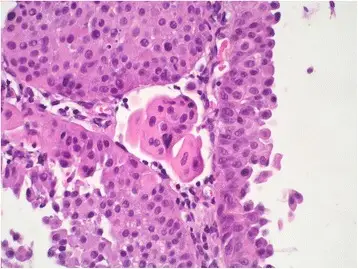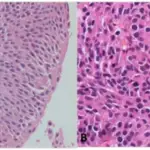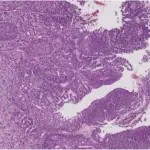Low-grade papillary urothelial carcinoma is a urothelial neoplasm composed of papillary fronds, which exhibit an overall orderly appearance but have mild variability in architectural and/or cytologic features.
What is the Pathology of Low-Grade Papillary Urothelial Carcinoma?
The pathology of low grade papillary urothelial carcinoma is:
-Etiology: The cause of low grade papillary urothelial carcinoma is smoking, occupational exposure to chlorinated hydrocarbons, polycyclic aromatic hydrocarbons and aromatic amines, arsenic exposure.
-Genes involved: FGFR3, PIK3CA, PTEN.
-Pathogenesis: The sequence of events that lead to Low grade papillary urothelial carcinoma is the genetic alterations.
-Morphology: The morphology associated with low grade papillary urothelial carcinoma shows exophytic papillary lesions, single or multiple; can vary greatly in size.
-Histology: The histology associated with Low grade papillary urothelial carcinoma shows neoplastic urothelium lining fibrovascular cores, long, slender papillae with minimal fusing or branching.
How does Low-Grade Papillary Urothelial Carcinoma Present?
Patients with Low grade papillary urothelial carcinoma typically affect males 2 times more than females at 70 years of age. The symptoms, features, and clinical findings associated with low grade papillary urothelial carcinoma include painless hematuria (gross or microscopic) and gross hematuria associated with more advanced pathologic stage.
How is Low-Grade Papillary Urothelial Carcinoma Diagnosed?
Low-grade papillary urothelial carcinoma is diagnosed by cystoscopy, ultrasound, CT scan, and biopsy.
How is Low-Grade Papillary Urothelial Treated?
Low-grade papillary urothelial carcinoma is treated by surgery if clinically indicated.
What is the Prognosis of Low Grade Papillary Urothelial Carcinoma?
The prognosis of low grade papillary urothelial carcinoma is poor with a high mortality rate.



